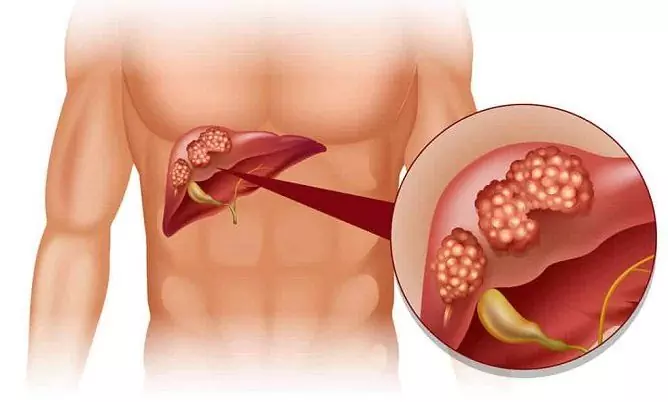- Author Rachel Wainwright [email protected].
- Public 2023-12-15 07:39.
- Last modified 2025-11-02 20:14.
Pineal cyst

A pineal cyst is a fluid-filled hollow mass that forms in one of the lobes of the pineal gland.
The pineal gland or pineal gland is a structure of the brain, a small, unpaired organ that performs an endocrine function. The pineal gland is a small, gray-red formation located between the cerebral hemispheres at the site of the interthalamic fusion. Outside, the gland is covered with a connective capsule. The functions of the pineal gland have not yet been thoroughly studied due to its small size, peculiarities of its location and connection with other structures of the brain. However, it has been established that the gland is directly involved in the regulation of circadian rhythms (sleep - wakefulness). The pineal gland is also known to produce melatonin. The functions of the pineal gland include:
- Slowing down the production of growth hormone;
- Regulation of the process of puberty, change in sexual behavior;
- Inhibition of the growth of neoplasms.
A pineal cyst is a benign formation that does not develop into a malignant tumor. Pineal cyst in the brain is a rare phenomenon. Cystic formation is diagnosed in only 1.5% of patients with brain diseases. Pineal cystic lesions are rarely dynamic growth. Cystic formation does not affect the functioning of the pineal gland, it rarely affects the adjacent structures of the brain, disrupting their function.
Pineal cyst of the brain: causes of development
The main reasons for the development of pineal cysts of the brain are:
- Blockage of the excretory canal, as a result of which the outflow of melatonin produced by the gland is disrupted. When the outflow duct is blocked, secretion accumulates;
- Echinococcosis - helminthiasis, provoking the formation of parasitic cysts in various organs. In other words, the defeat of the pineal gland by echinococcus, which enters the gland with the blood stream. The parasite forms an echinococcal capsule, protecting itself from the body's immune attacks. The pineal cyst, formed by the echinococcus membrane, is filled with the waste products of the parasite, and may slightly increase in size.
Due to the fact that this structure of the brain is poorly understood, other causes of the formation of cysts of the pineal gland of the brain are still not established. This is also due to the fact that the formation and development of the pineal cyst is almost asymptomatic.
Pineal cyst: symptoms of the disease
With the development of a pineal cyst, symptoms usually do not appear. The main complaint of patients is unreasonable headaches, which are difficult to associate with other factors, such as stress, overwork, pressure. A cystic mass is diagnosed randomly by examining the brain using MRI. Most patients with a diagnosed pineal cyst had no symptoms or were common in a number of brain diseases:
- Headache, not caused by other factors, arising haphazardly and for no reason;
- Visual impairment (in most cases, patients notice double vision, blurring of the picture);
- Impaired coordination of movements, gait;
- Nausea, vomiting, provoked by attacks of severe headache;
- Hydrocephalus, which develops as a result of compression of the pineal gland by the cyst of the cerebral duct and disturbance of the flow of cerebrospinal fluid.

The severity of symptoms in cystic formations of the pineal gland completely depends on the size of the formation and the pressure on other parts of the brain. When the formation reaches a critical size, the cyst can completely block the flow of cerebrospinal fluid, which can have extremely negative consequences for the whole organism.
Symptoms caused by a parasitic pineal cyst will have a slightly different nature. The general clinical picture of an echinococcal cyst will be supplemented by a number of mental disorders: depression, dementia, delusional states. In rare cases, epileptic seizures are observed. With a progressive pineal cyst, there will be an increase in focal symptoms, an increase in blood pressure.
Pineal cyst: risks and projections
The main risk in the formation of a pineal cyst in humans is a high probability of hydrocephalus - dropsy of the brain due to the accumulation of cerebrospinal fluid in the ventricular parts of the brain. However, pineal cysts are usually nondynamic. That is, the formed cyst does not affect the functioning of the brain regions in any way. Constant monitoring of cystic formation will prevent its further development.
The greatest risk in diagnosing pineal cystic lesions is misdiagnosis and ineffective treatment or unnecessary surgery.
Pineal cyst: treatment
If a pineal cyst is found, treatment is usually not required. In most cases, even an MRI scan may not give a clear idea of the nature of the cyst. To confirm the diagnosis, they resort to biopsy and laboratory examination of a biopsy for the presence of cancer cells, as well as to clarify the etiology of the cyst. Cystic formation of the pineal gland should be differentiated from brain tumors.
Pineal cyst of the brain does not lend itself to conservative drug treatment. Cystic formations of the pineal gland of echinococcal etiology are amenable to drug treatment in the early stages. With large sizes of the pineal cyst, only surgical treatment is assumed. Indications for surgery are:
- The severity of symptoms;
- Increased risk of hydrocephalus
- Influence of cysts on the functioning of the cardiovascular system, influencing the adjacent brain structures.
The factors that can trigger the growth of pineal cysts are currently unknown. Surgical intervention carries certain risks for the patient. Today, doctors agree on the need to constantly monitor the condition of the pineal gland and cystic formation, provoked by a blockage of the excretory duct. To observe the dynamics of the cyst, MRI monitoring should be performed once every 6 months. When diagnosing a cyst caused by echinococcosis, in most cases, a decision is made to remove the bladder. In cases of pronounced symptoms and the absence of other indications for surgical intervention, patients are prescribed medication to relieve symptoms.
YouTube video related to the article:
The information is generalized and provided for informational purposes only. At the first sign of illness, see your doctor. Self-medication is hazardous to health!






